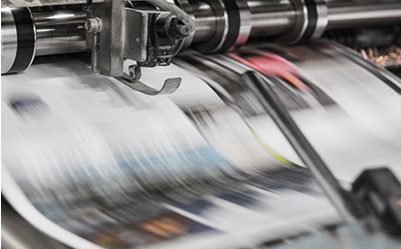-
News Center
- Foreign media: The printing industry is closer to the level before the epidemic in the third quarter
-

- The UK printing and print packaging industry continues to rebound, with most companies improving in the third quarter, and many expecting further improvement in the fourth quarter, despite being significantly impacted by supply chain challenges and increased costs.
BPIF's newest publication, Printing Outlook, is a quarterly industry health research report. The report found that after the Covid-19 outbreak in the first quarter of 2020, with the lifting of lockdown restrictions and the further opening of the economy, workloads did not improve significantly until the second quarter of this year.
As expected, the third quarter experienced continued growth and improved activity levels, a trend that is expected to continue in the fourth quarter despite supply chain challenges and sharp increases in input prices.
The survey found that 59% of printers managed to increase production levels in the third quarter of 2021. Another 33% of printers were able to maintain stable production, and the remaining 8% saw a decline in production.
BPIF economist Kyle Jardine pointed out: "The stay at home is over, the printing business staff are coming to work, the economy is starting to recover, and more jobs are being created and approved."
Many printers are positive about year-end production growth, especially aided by marketing campaigns around Halloween and Christmas, with strong activity levels expected to continue into the fourth quarter.
48% of companies expect output growth to increase, 42% predict they will be able to maintain stable output levels in the fourth quarter, and only 10% say they expect their output levels to decline.
For the second consecutive quarter, 85% of respondents identified substrate costs as the top business concern for printing companies, 61% cited access to skilled labor as their second biggest concern, and 55% cited energy costs as their number one concern. Three major concerns. When it comes to dealing with the economic impact of Covid-19, the ranking has dropped considerably, with only 14% of companies choosing it.
Raw material supply shortages are now the most challenging issue affecting companies' ability to recover from the impact of Covid-19. "Insufficient demand" was previously the top operational challenge selected in Q1, when it was selected by 60% of respondents. However, this figure dropped to 44% in the second quarter and 23% in the third quarter, and is now only the fifth challenge.
68% of respondents believe that concerns about shortages of imported inputs and raw material supply have increased as the most selective challenge, slightly ahead of the supply of domestic inputs. "Other cost pressures" came in third with 41% of respondents.
Companies across the industry have experienced unprecedented and significant cost increases in all major cost areas of their operations, and upward pressure is expected to increase in the fourth quarter.
The increase in paper and board costs continued to generate the greatest inflationary pressures in the third quarter, but cost inflation across sectors remained exceptionally strong for now, BPIF said.
Jardine said: “The industry has historically been not very good at passing on cost increases, but in the current environment, we’re finding that customers are aware of the cost increases. That’s why this time around, companies appear to be able to pass on more costs than ever before. But there's only so much you can do, and if costs keep going up, it's going to be harder to get back to customers to keep adding costs. Obviously, at some point, there's a concern that work levels will be hampered by that."
The survey also found that the vast majority (91%) of companies do not expect to make layoffs before the end of December after the stay-at-home program ends.
100% of businesses said they expect at least 50% of employees currently working from home to be back in the office by the end of December, at least to some extent. Moreover, the industry capacity utilization rate continued to increase strongly, and the capacity utilization rate in October was higher than that in July.
Finally, the number of printing and packaging companies experiencing "serious" financial distress declined in the third quarter. Those experiencing "significant" financial distress will also fall back to more "normal" third-quarter levels.
The third quarter print outlook survey was conducted October 1-18, 2021, and received responses from 114 companies.
